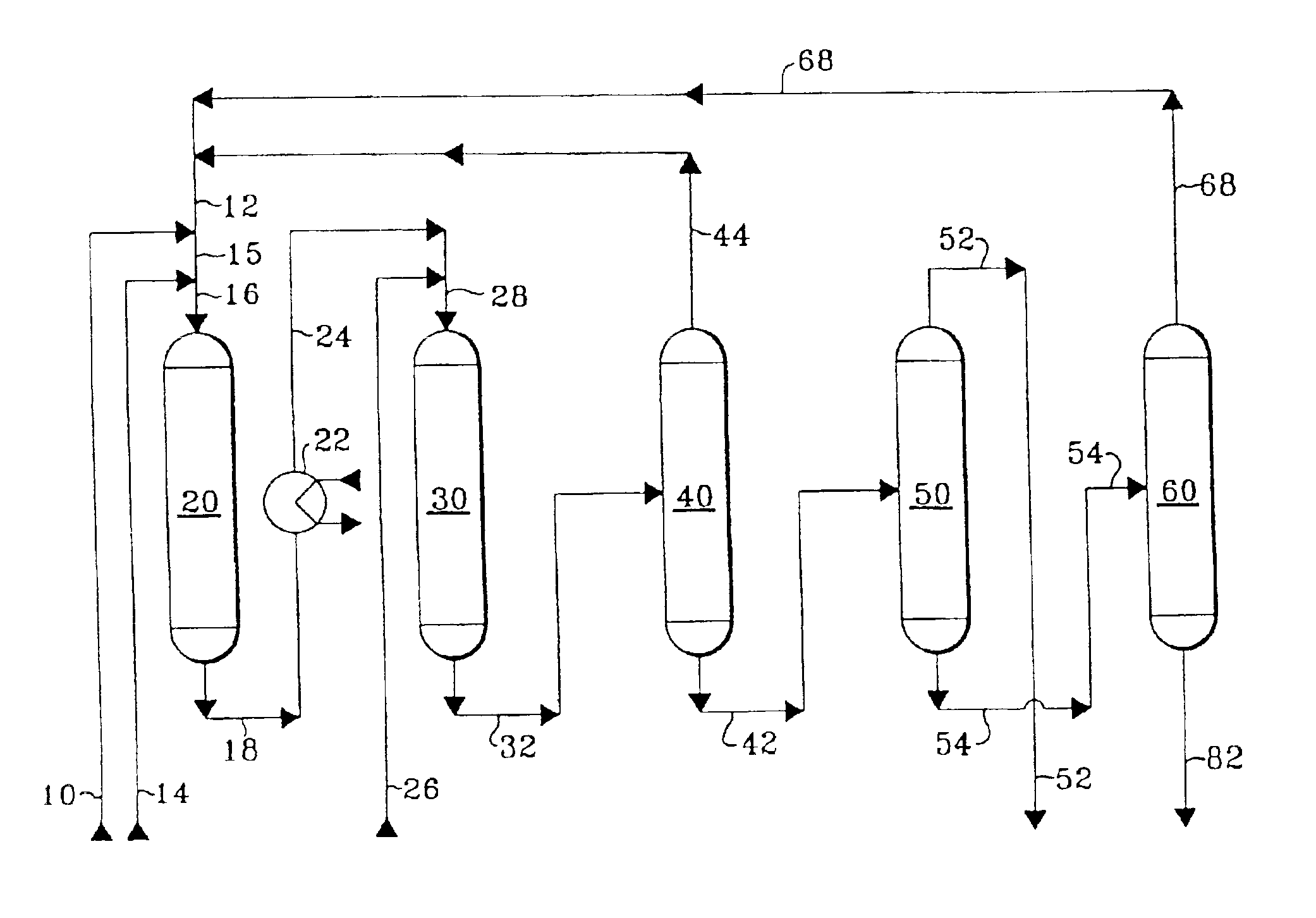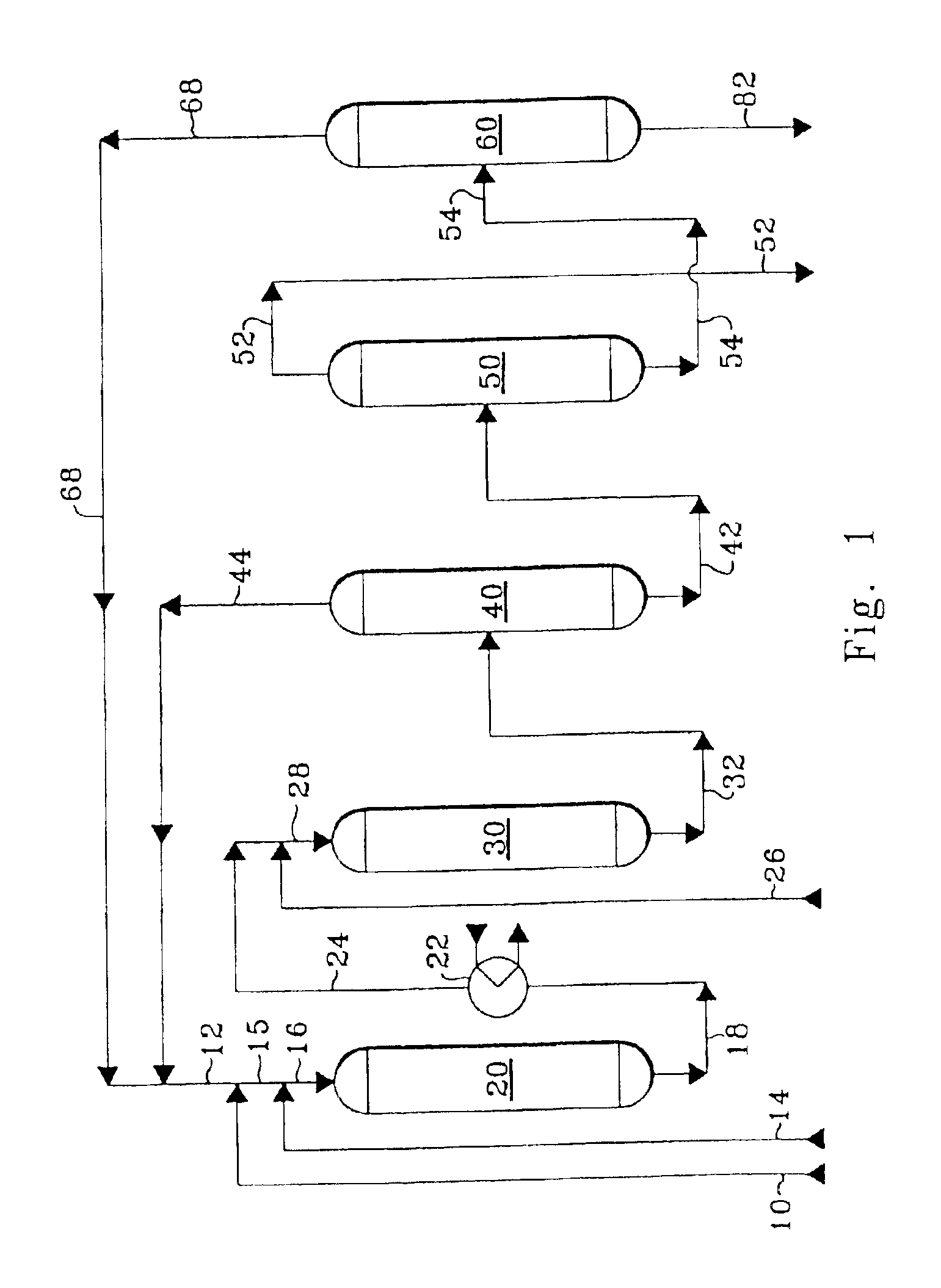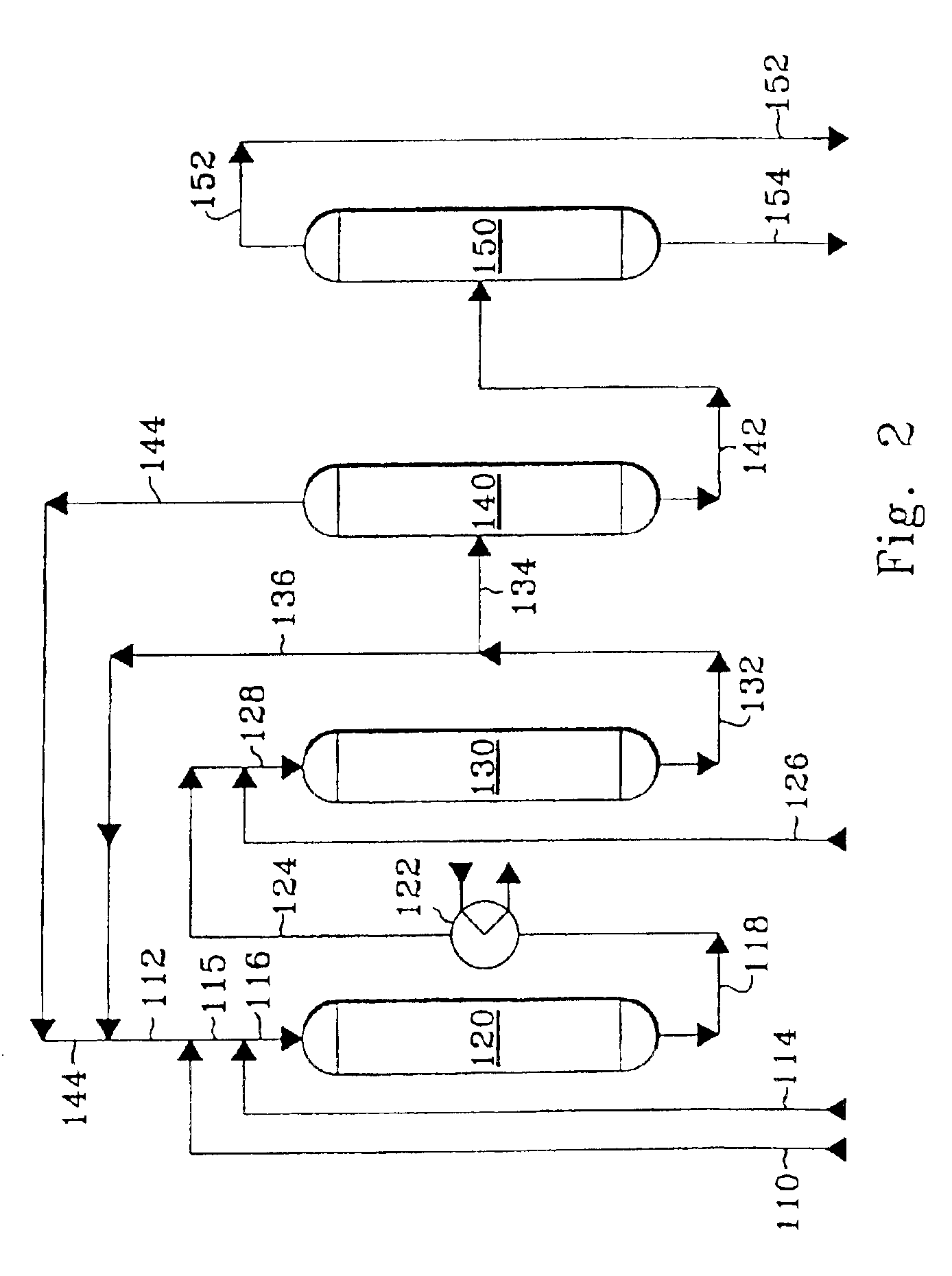Method of controlling monoalkyl aromatic process
a technology of monoalkyl aromatic compounds and alkylation, which is applied in the direction of organic chemistry, chemical apparatus and processes, hydrocarbon preparation catalysts, etc., can solve the problems of low phenyl/ethyl ratio, high phenyl/ethyl ratio, and reduced ethylene utilization efficiency of 1,1-dpe, so as to reduce the amount of 1,1-dpe formed, increase the phenyl/ethyl ratio, and reduce the amount of 1,1-dp
- Summary
- Abstract
- Description
- Claims
- Application Information
AI Technical Summary
Benefits of technology
Problems solved by technology
Method used
Image
Examples
examples
Catalyst A is Fresh Alkylation Catalyst Comprising Zeolite Beta
A sample of Catalyst A was used to produce ethylbenzene by alkylating benzene with ethylene at alkylation conditions at which heavy alkylaromatics were occluded on the surface and within the internal pore space of the sample of Catalyst A. After having been used for alkylation, the sample of Catalyst A had a content of occluded heavy alkylaromatics of about 5% by weight of the catalyst weight. While being contacted with air, the sample of Catalyst A having occluded heavy alkylaromatics was heated from ambient temperature to 1202° F. (650° C.) over a period of three hours, was maintained at 1202° F. (650° C.) for three hours, and then was cooled to room temperature. The sample of Catalyst A after cooling is referred to in these Examples as Catalyst B.
Catalyst C is a fresh alkylation catalyst comprising zeolite beta.
Catalyst D is a fresh alkylation catalyst comprising 80 wt-% ‘ultrastabilized’ zeolite Y and 20 wt-% alumina...
example 5
shows the effect of recycling a portion of the reactor effluent stream to the reactor at a lower molar ratio of phenyl groups per ethyl group than in Examples 1 through 4, but without decreasing the concentration of ethylene in the feed stream. With the concentration of ethylene in the feed stream being relatively high at 5.52 wt-%, then even though the molar ratio of phenyl groups per ethyl group is 1.81:1, the ethylbenzene yield is lower, the 1,1-DPE selectivity is higher, and the ratio of 1,1-DPE per ethylbenzene in the effluent stream is higher than in Examples 1 through 4.
In Example 6, fresh diethylbenzene was passed to the reactor in order to simulate the effect of recycling diethylbenzene. Fresh diethylbenzene constituted 4.5 wt-% of the weight of the fresh benzene, fresh ethylene, and fresh diethylbenzene that was passed to the reactor. The molar ratio of phenyl groups per ethyl group of 4.54 takes into account the phenyl and ethyl groups of the fresh diethylbenzene. A compa...
examples 12 and 13
are illustrative of a preferred catalyst for use in this invention.
PUM
| Property | Measurement | Unit |
|---|---|---|
| weight | aaaaa | aaaaa |
| weights | aaaaa | aaaaa |
| concentration | aaaaa | aaaaa |
Abstract
Description
Claims
Application Information
 Login to View More
Login to View More - R&D
- Intellectual Property
- Life Sciences
- Materials
- Tech Scout
- Unparalleled Data Quality
- Higher Quality Content
- 60% Fewer Hallucinations
Browse by: Latest US Patents, China's latest patents, Technical Efficacy Thesaurus, Application Domain, Technology Topic, Popular Technical Reports.
© 2025 PatSnap. All rights reserved.Legal|Privacy policy|Modern Slavery Act Transparency Statement|Sitemap|About US| Contact US: help@patsnap.com



